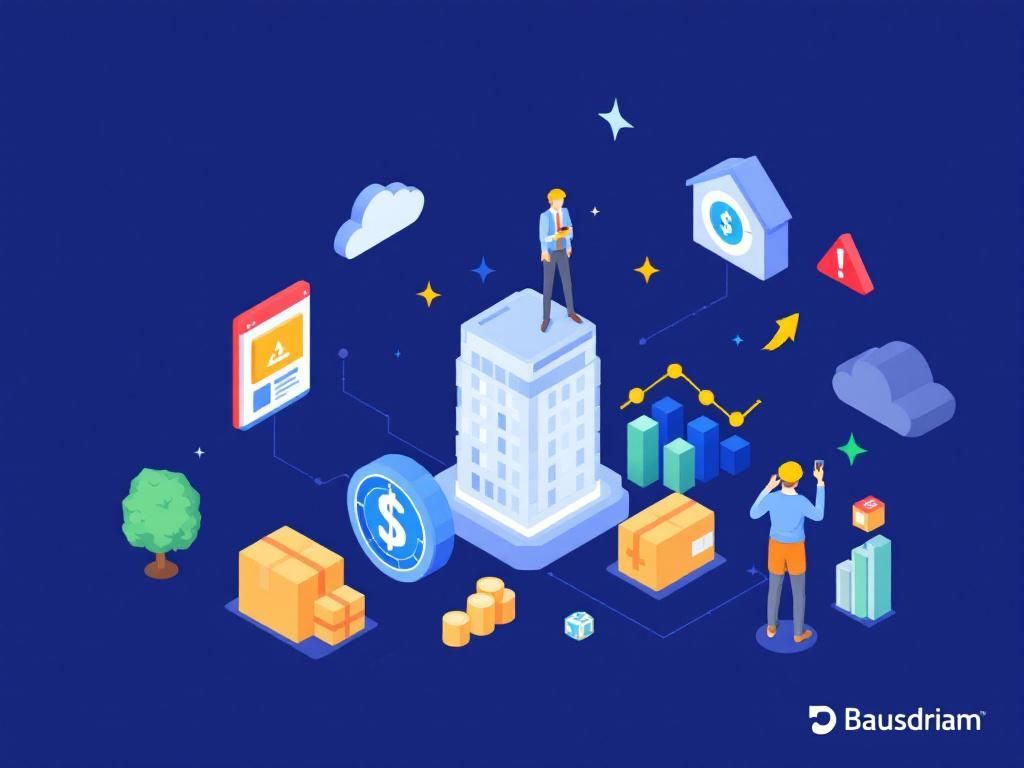Future-Proof Your eCommerce with Continuity Services
Discover how continuity services can enhance your eCommerce strategy, ensuring long-term success and customer retention in a competitive market.

As the digital landscape continues to evolve, the need for eCommerce businesses to adapt and stay ahead of the curve has never been more critical. With increasing competition and shifting consumer expectations, developing a robust strategy that incorporates continuity services can help maintain relevance and drive sustained growth. This article delves into the fundamentals of continuity services and how they can future-proof your eCommerce strategy.
Table of Contents
Understanding Continuity Services
Continuity services refer to a range of solutions focused on maintaining seamless operations, enhancing customer experiences, and ensuring business resilience amidst unforeseen disruptions. These services encompass backup plans, risk assessments, and strategic frameworks tailored to mitigate risks faced by eCommerce platforms.
The Importance of Continuity in eCommerce
- Operational Resilience: Ensures that your business can withstand unexpected challenges such as technical failures or supply chain disruptions.
- Customer Retention: By maintaining services and offering reliable support, businesses can foster trust and loyalty among customers.
- Competitive Advantage: Businesses that proactively manage continuity are often better positioned to leverage market opportunities as they arise.
Key Components of Continuity Services
To effectively implement continuity services in your eCommerce strategy, it’s essential to understand the core components that contribute to a comprehensive continuity plan:
1. Risk Assessment
Conducting a thorough risk assessment helps identify vulnerabilities within your eCommerce operations. This may include analyzing:
- Supply chain dependencies
- Technological infrastructure
- Market trends and consumer behavior
2. Business Impact Analysis
This analysis evaluates the potential effects of disruptions on business operations, revenue streams, and customer satisfaction. Key areas to consider include:
- Financial losses
- Product availability
- Customer service capabilities
3. Development of Continuity Plans
Once risks are assessed, the next step is to formulate actionable continuity plans. These plans should outline:
- Emergency response procedures
- Data backup strategies
- Communication protocols during a disruption
Leveraging Technology for Continuity
Technology plays a pivotal role in enhancing the continuity of eCommerce operations. Here are some technological solutions that can be leveraged:
1. Cloud Backup Solutions
Utilizing cloud-based services ensures that critical data is backed up and available even during outages or hardware failures. Some popular cloud backup options include:
| Service Provider | Features | Pricing |
|---|---|---|
| AWS | Scalable storage, data encryption | Pay-as-you-go |
| Google Cloud | Integrated analytics, Machine Learning | Based on usage |
| Microsoft Azure | Hybrid cloud options, compliance support | Subscription-based |
2. Customer Relationship Management (CRM) Systems
Implementing a robust CRM system can help maintain customer engagement and streamline communication during disruptions. Benefits include:
- Centralized customer data
- Automated communication processes
- Enhanced customer insights
Training and Development for Staff
Ensuring that your team is well-equipped to handle disruptions is essential for maintaining operational continuity. Consider implementing:
1. Regular Training Sessions
Organize ongoing training that focuses on:
- Crisis management protocols
- Customer service best practices
- Technological tools for continuity
2. Simulated Disruptions
Conducting simulated disruption exercises can help prepare your team for real-life scenarios, ensuring that they are confident and capable of executing continuity plans effectively.
Monitoring and Continuous Improvement
Establishing a continuity strategy is not a one-time task; it requires ongoing monitoring and refinement. Key steps include:
1. Performance Metrics
Define and track key performance indicators (KPIs) that reflect the effectiveness of your continuity efforts. Examples include:
- Response time during disruptions
- Customer satisfaction scores
- Operational downtime
2. Regular Reviews
Schedule periodic reviews of your continuity plans and practices to ensure they remain relevant and effective in light of evolving business conditions.
Conclusion
In an ever-changing eCommerce landscape, integrating continuity services into your operational strategy is not just a best practice—it’s a necessity. By understanding the importance of risk assessment, leveraging technology, training your team, and committing to ongoing improvement, businesses can enhance their resilience and future-proof their eCommerce endeavors. Embrace continuity services today to build a more secure, adaptable, and successful online business for tomorrow.
FAQ
What are continuity services in eCommerce?
Continuity services in eCommerce refer to strategies and systems designed to ensure uninterrupted business operations, enabling businesses to adapt to changing market conditions and customer needs.
How can continuity services benefit my online store?
Continuity services can enhance your online store by improving customer retention, streamlining operations, and ensuring that your business can quickly recover from disruptions, thus maintaining sales and customer satisfaction.
What types of continuity services should I consider for my eCommerce business?
Consider services such as inventory management, automated customer communication, data backup solutions, and crisis management strategies to ensure your eCommerce business remains resilient.
How do I implement continuity services in my eCommerce strategy?
To implement continuity services, assess your current operations, identify potential risks, and integrate solutions like cloud storage, automated workflows, and robust customer support systems.
Will continuity services increase my eCommerce costs?
While there may be initial costs associated with implementing continuity services, the long-term benefits of increased efficiency, customer loyalty, and reduced downtime often outweigh these expenses.
How can I measure the effectiveness of continuity services in my eCommerce business?
You can measure the effectiveness of continuity services through key performance indicators (KPIs) such as customer retention rates, order fulfillment times, and overall sales growth during disruptions.






